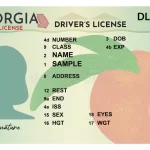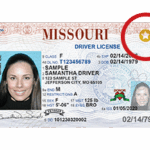Hidden Issues with Used Car Titles: Decoding the Risks and Protecting Your Investment

Buying a used car can be a smart financial decision, offering a more affordable alternative to purchasing a brand-new vehicle. However, the allure of a lower price tag can sometimes overshadow the importance of a thorough investigation into the car’s history, and particularly, its title. While the exterior might gleam and the engine purr, a hidden issue lurking within the title can transform your dream car into a costly nightmare.
The title is more than just a piece of paper; it’s the legal document that proves ownership and reveals crucial information about the car’s past. Ignoring the potential for title issues can lead to a host of problems, from difficulty registering the vehicle to facing hefty repair bills due to undisclosed damage. This comprehensive guide will delve into the hidden issues that can plague used car titles, equip you with the knowledge to identify potential red flags, and empower you to protect your investment.
Why Title Issues Matter: A Case Study in Regret
Imagine this: You’ve found the perfect used car online, a sleek sedan with low mileage and a seemingly clean history. You negotiate a great price, sign the paperwork, and proudly drive it home. But your joy is short-lived. When you attempt to register the car at the DMV, your application is rejected. The title is flagged as “Salvage” due to a previous accident, an accident the seller conveniently omitted. Now you’re stuck with a vehicle you can’t legally drive, facing costly repairs to get it roadworthy, and potentially battling the seller in court.
This scenario, unfortunately, is not uncommon. Title issues can emerge in various forms, each with its own set of complications and financial implications. Understanding these potential problems is the first step toward avoiding them.
Unveiling the Usual Suspects: Common Title Issues Explained
Let’s explore the most common types of title issues that plague the used car market:
1. Salvage Titles: A Vehicle Back from the Brink
A salvage title is issued to a vehicle that has been declared a total loss by an insurance company due to an accident, flood, fire, or other significant damage. This usually happens when the cost of repairing the vehicle exceeds a certain percentage of its pre-damage value, typically 75-90%.
- The Risks:
- Undisclosed Damage: While the vehicle might appear repaired, underlying structural damage can remain, compromising safety and performance.
- Reduced Value: Salvage title vehicles are worth significantly less than comparable vehicles with clean titles.
- Insurance Difficulties: Obtaining comprehensive or collision insurance might be challenging or prohibitively expensive.
- Registration Restrictions: Some states have stricter registration requirements for salvage vehicles, potentially requiring additional inspections.
- Safety Concerns: Shoddy repairs can lead to mechanical failures and safety hazards, putting you and your passengers at risk.
- Red Flags:
- Price Significantly Lower Than Market Value: A suspiciously low price is often a telltale sign.
- “As-Is” Sales: Sellers are often hesitant to offer warranties on salvage vehicles.
- Unwillingness to Provide Vehicle History Report: Sellers might try to conceal the vehicle’s history.
- Poor Repair Quality: Look for mismatched paint, uneven panels, and other signs of subpar repairs.
- Musty Odor or Water Stains: Indicates potential flood damage.
2. Rebuilt Titles: A Second Chance with Caution
A rebuilt title is issued to a vehicle that was previously declared salvage and has been repaired and inspected to meet state safety standards. While a rebuilt title signifies that the vehicle has passed inspection, it doesn’t guarantee its long-term reliability.
- The Risks:
- Potential for Hidden Damage: Even with inspection, underlying structural or mechanical issues can surface later.
- Lower Resale Value: Rebuilt title vehicles are still worth less than comparable vehicles with clean titles, although more than salvage titles.
- Insurance Challenges: Similar to salvage titles, insurance companies may be hesitant to provide full coverage.
- Inspection Requirements: States may require periodic inspections to ensure continued roadworthiness.
- Red Flags:
- Lack of Repair Documentation: Request detailed documentation of the repairs performed, including receipts and inspection reports.
- Questionable Repair Quality: Examine the vehicle carefully for signs of poor craftsmanship.
- Unwillingness to Offer a Warranty: A reputable dealer should be willing to stand behind the repairs.
3. Flood Titles: Submerged History, Submerged Risks
A flood title indicates that the vehicle has been submerged in water to a degree that could cause significant damage. Even if the vehicle appears to be in good condition, water damage can lead to corrosion, electrical problems, and mold growth.
- The Risks:
- Electrical Issues: Corrosion can damage wiring and electrical components, leading to intermittent malfunctions and potential safety hazards.
- Mechanical Problems: Water can contaminate engine oil and other fluids, causing premature wear and failure.
- Mold and Mildew: Mold can grow in the interior, causing respiratory problems and unpleasant odors.
- Rust and Corrosion: Water can accelerate rust and corrosion, weakening the vehicle’s structure.
- Reduced Reliability: Flood-damaged vehicles are generally less reliable than vehicles that haven’t been flooded.
- Red Flags:
- Musty Odor: A distinct musty odor in the interior is a major red flag.
- Water Stains: Look for water stains on the carpets, upholstery, and headliner.
- Rust and Corrosion: Check for rust and corrosion in the engine compartment, undercarriage, and interior.
- Dirty or Muddy Areas: Look for mud or silt in hard-to-reach areas.
- Electrical Malfunctions: Test all electrical components, including lights, windows, and radio.
4. Odometer Fraud: Rolling Back the Miles
Odometer fraud occurs when someone alters the odometer reading to make a vehicle appear to have lower mileage than it does. This deceptive practice can significantly inflate the vehicle’s value and mislead potential buyers.
- The Risks:
- Overpaying for the Vehicle: You’ll be paying more than the vehicle is worth based on its true mileage.
- Increased Maintenance Costs: Vehicles with higher mileage are more likely to require repairs and maintenance.
- Premature Failure: Components may fail sooner than expected due to the vehicle’s actual wear and tear.
- Red Flags:
- Inconsistencies in Vehicle History Report: Compare the odometer readings in the vehicle history report.
- Wear and Tear Inconsistent with Mileage: Examine the seats, steering wheel, pedals, and tires for excessive wear.
- Tampered Odometer: Look for signs that the odometer has been tampered with, such as scratches or loose screws.
- Suspiciously Low Price for the Year and Model: A price that seems too good to be true might indicate odometer fraud.
5. Lien Issues: Unpaid Debts Attached to the Car
A lien is a legal claim against a vehicle, typically held by a lender as security for a loan. If the previous owner hasn’t paid off the loan, the lien remains attached to the vehicle, even after it’s sold.
- The Risks:
- Repossession: The lender can repossess the vehicle if the previous owner defaults on the loan.
- Legal Disputes: You could become embroiled in legal disputes with the lender.
- Financial Loss: You could lose the vehicle and the money you paid for it.
- Red Flags:
- Title Not in Seller’s Name: This is a major red flag that someone else may have a claim to the vehicle.
- Seller Unable to Provide Lien Release: The seller should be able to provide a lien release from the lender, proving that the loan has been paid off.
- Title Lists a Lienholder: The title may list a lienholder, indicating that a loan is still outstanding.
6. Grey Market Vehicles: Illegally Imported and Potentially Unsafe
Grey market vehicles are vehicles that were not originally manufactured to meet U.S. safety and emissions standards and were imported without proper modifications and documentation.
- The Risks:
- Safety Concerns: Grey market vehicles may not meet U.S. safety standards, potentially making them less safe in an accident.
- Emissions Issues: They may not meet U.S. emissions standards, potentially leading to fines and registration problems.
- Difficulty Obtaining Parts and Service: Parts and service may be difficult to obtain due to the vehicle’s non-standard configuration.
- Lower Resale Value: Grey market vehicles typically have a lower resale value than U.S.-spec vehicles.
- Legal Issues: Importing and registering a grey market vehicle can be complex and may involve legal risks.
- Red Flags:
- Non-Standard Features: Look for features that are not typically found on U.S.-spec vehicles.
- Metric Gauges: The speedometer and odometer may be in kilometers per hour instead of miles per hour.
- Missing Safety Labels: Safety labels may be missing or in a foreign language.
- Unusual Vehicle Identification Number (VIN): The VIN may not conform to U.S. standards.
7. Clone Vehicles: A Stolen Identity and a High-Risk Gamble
A clone vehicle is a vehicle that has been illegally assigned the Vehicle Identification Number (VIN) from another, legitimate vehicle. This is often done to disguise stolen vehicles or to sell salvaged or rebuilt vehicles as clean title vehicles.
- The Risks:
- Vehicle Confiscation: If the vehicle is identified as a clone, it will be confiscated by law enforcement.
- Legal Penalties: You could face legal penalties for possessing a stolen vehicle.
- Financial Loss: You will lose the vehicle and the money you paid for it.
- Red Flags:
- VIN Plate Tampering: Look for signs that the VIN plate has been tampered with, such as scratches or loose rivets.
- Inconsistencies in Vehicle History Report: Compare the VIN on the vehicle to the VIN in the vehicle history report.
- Mismatching VINs: Check for VINs in different locations on the vehicle and compare them.
- Suspicious Seller: Be wary of sellers who are evasive or pressure you to buy the vehicle quickly.
Proactive Protection: Your Toolkit for Title Investigation
Now that you’re aware of the potential dangers, let’s equip you with the tools and strategies to protect yourself:
1. Obtain a Vehicle History Report:
Companies like Carfax and AutoCheck compile vehicle history reports from various sources, including DMV records, insurance companies, and repair shops. These reports can reveal:
- Title History: Check for salvage, flood, or rebuilt titles.
- Accident History: Review reported accidents and damage.
- Odometer Readings: Verify odometer consistency.
- Lien Information: Identify any outstanding liens.
- Number of Owners: Track the vehicle’s ownership history.
While a vehicle history report is a valuable tool, it’s not foolproof. It may not reflect all accidents or damage, especially if they weren’t reported to insurance companies or DMVs.
2. Conduct a Thorough Visual Inspection:
Don’t rely solely on the vehicle history report. Conduct a thorough visual inspection, both inside and outside the car, paying close attention to potential red flags mentioned earlier.
- Inspect the Paint: Look for mismatched paint, uneven panels, and other signs of repairs.
- Check for Rust and Corrosion: Examine the engine compartment, undercarriage, and interior for rust and corrosion.
- Smell for Unusual Odors: Be alert for musty odors or the smell of mildew.
- Test All Electrical Components: Ensure that all lights, windows, and other electrical components are functioning properly.
- Examine the Tires: Check the tire tread depth and look for signs of uneven wear.
3. Have the Vehicle Inspected by a Qualified Mechanic:
A pre-purchase inspection by a trusted mechanic is an invaluable investment. A mechanic can identify potential mechanical problems that may not be visible to the untrained eye. They can also assess the quality of any previous repairs.
4. Verify the Title Information:
Carefully examine the title document for any discrepancies or red flags.
- Ensure the Seller’s Name Matches the Title: The name on the title should match the seller’s identification.
- Check for Alterations or Erasures: Look for any signs that the title has been altered or erased.
- Verify the VIN: Compare the VIN on the title to the VIN on the vehicle.
- Look for Lienholder Information: Check for any liens listed on the title.
5. Research Lemon Laws and Consumer Protections:
Familiarize yourself with your state’s lemon laws and other consumer protection laws. These laws may provide recourse if you purchase a vehicle with significant defects.
6. Consider a Professional Title Search:
For added peace of mind, you can hire a professional title search company to conduct a more thorough investigation of the vehicle’s title history.
Navigating the Purchase: Smart Strategies for a Smoother Transaction
Once you’ve investigated the title and the vehicle, consider these strategies to ensure a smoother and safer transaction:
- Negotiate the Price: Use any title issues or mechanical problems you uncover as leverage to negotiate a lower price.
- Obtain a Written Warranty: If possible, obtain a written warranty from the seller. This can protect against unexpected repairs.
- Pay with a Secure Method: Avoid paying with cash. Use a cashier’s check or a credit card, which offers some protection against fraud.
- Obtain a Bill of Sale: A bill of sale documents the transaction and includes important information, such as the purchase price, vehicle identification number, and the seller’s contact information.
The Bottom Line: Due Diligence is Your Best Defense
Buying a used car can be a rewarding experience, but it’s essential to approach the transaction with caution and conduct thorough due diligence. Understanding the potential hidden issues with used car titles, knowing how to identify red flags, and utilizing the tools and strategies outlined in this guide can empower you to make informed decisions and protect your investment. Remember, a little extra effort up front can save you a lot of heartache and financial loss down the road. Don’t let a hidden title issue turn your dream car into a nightmare.















